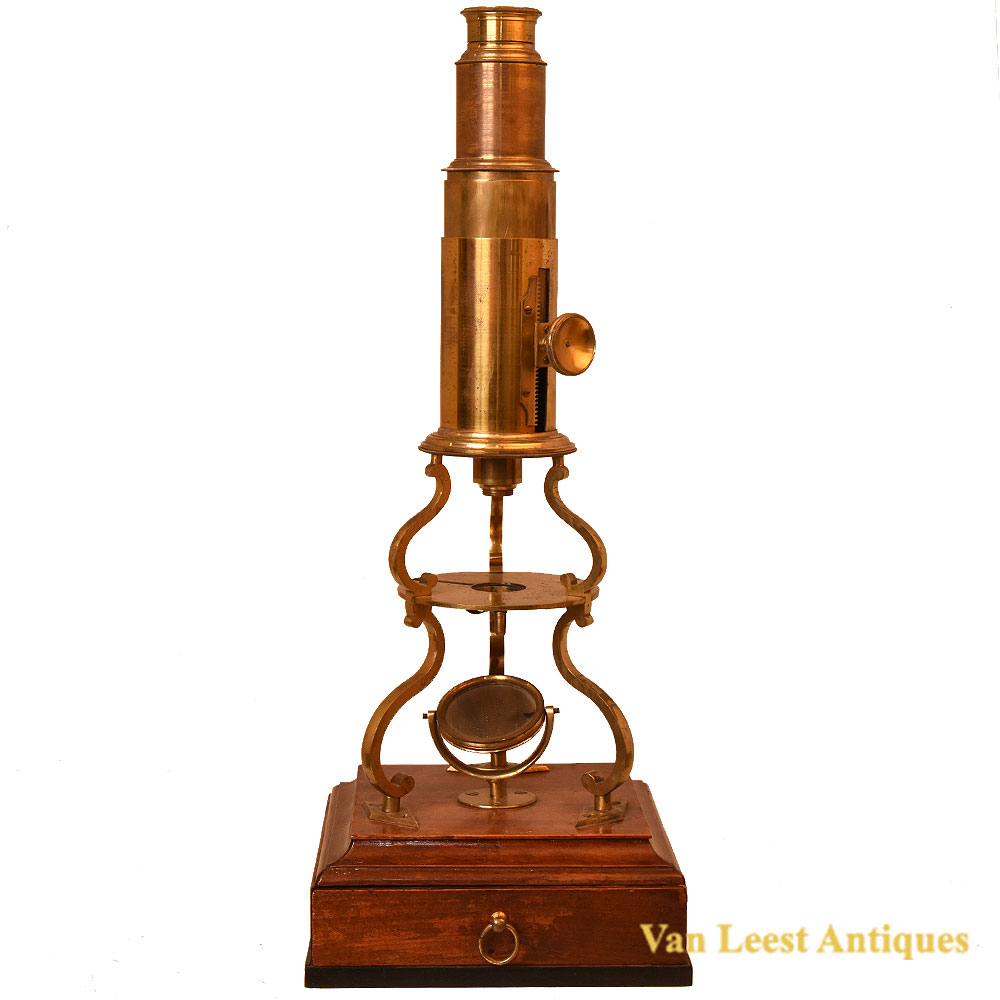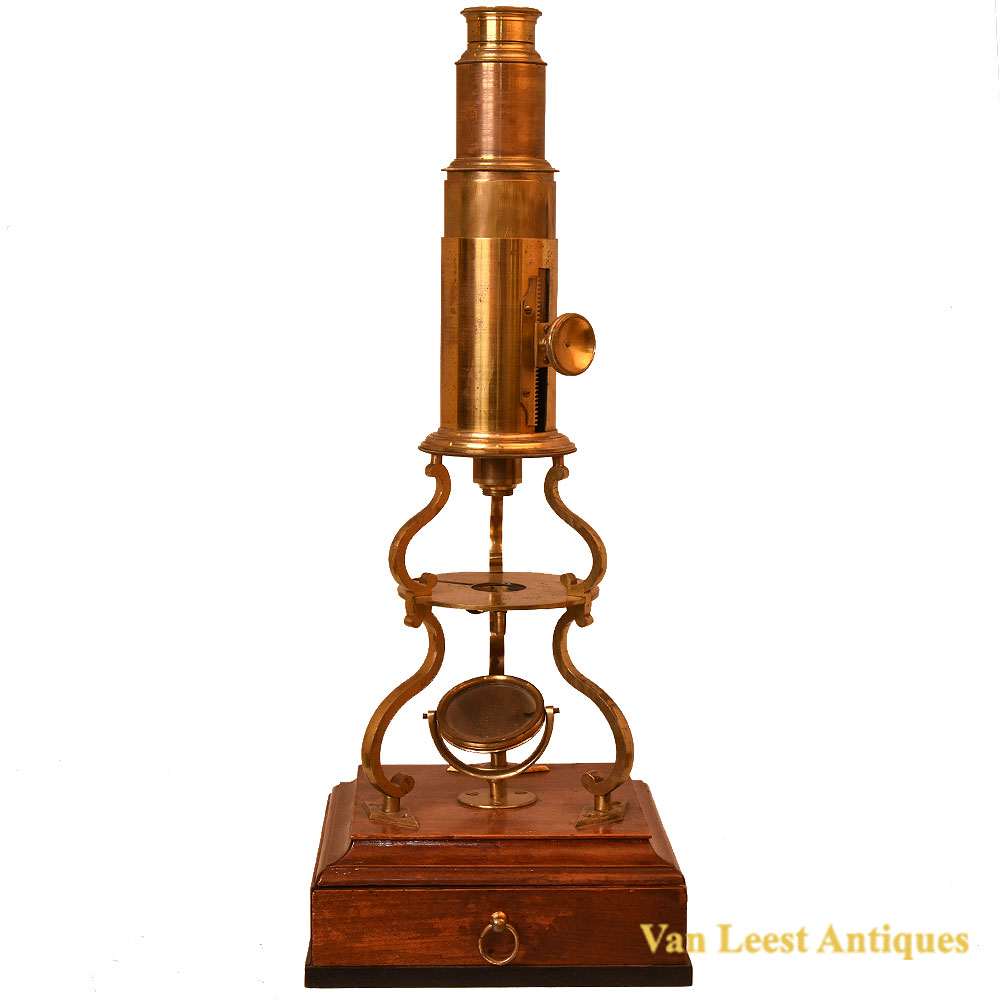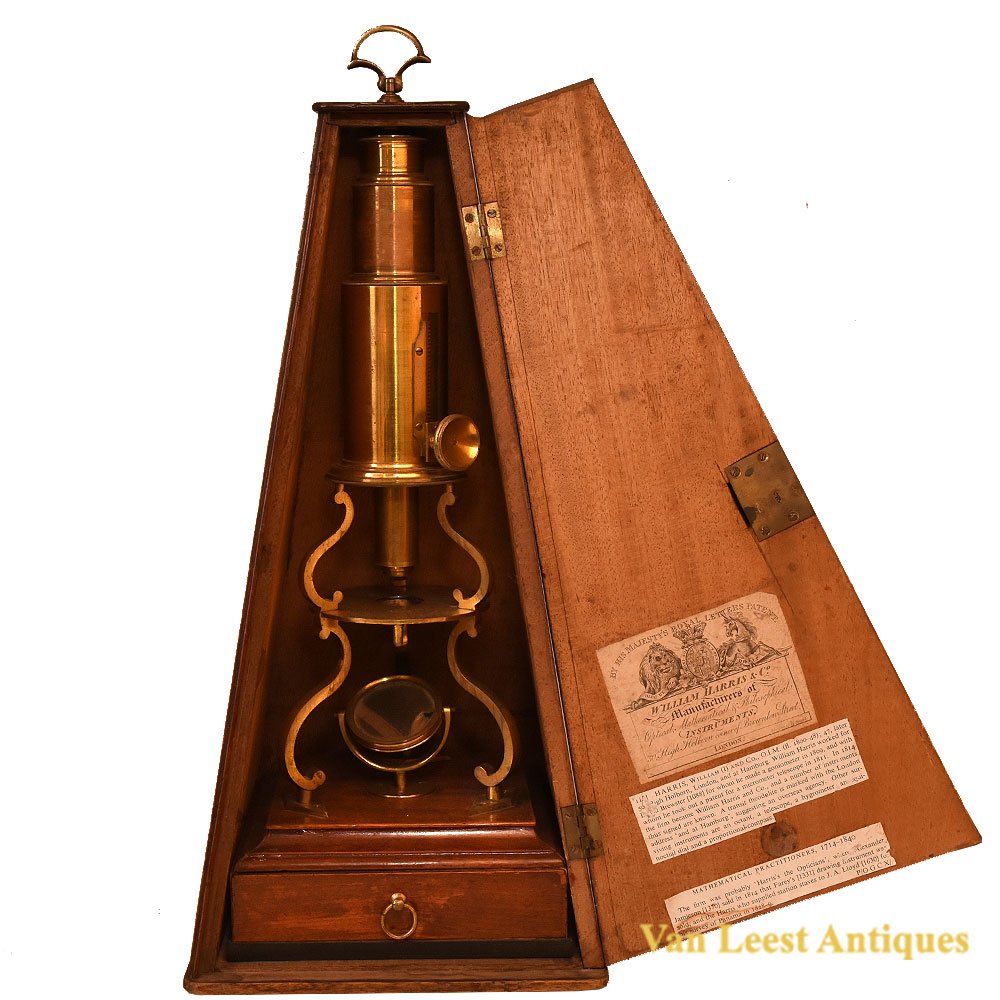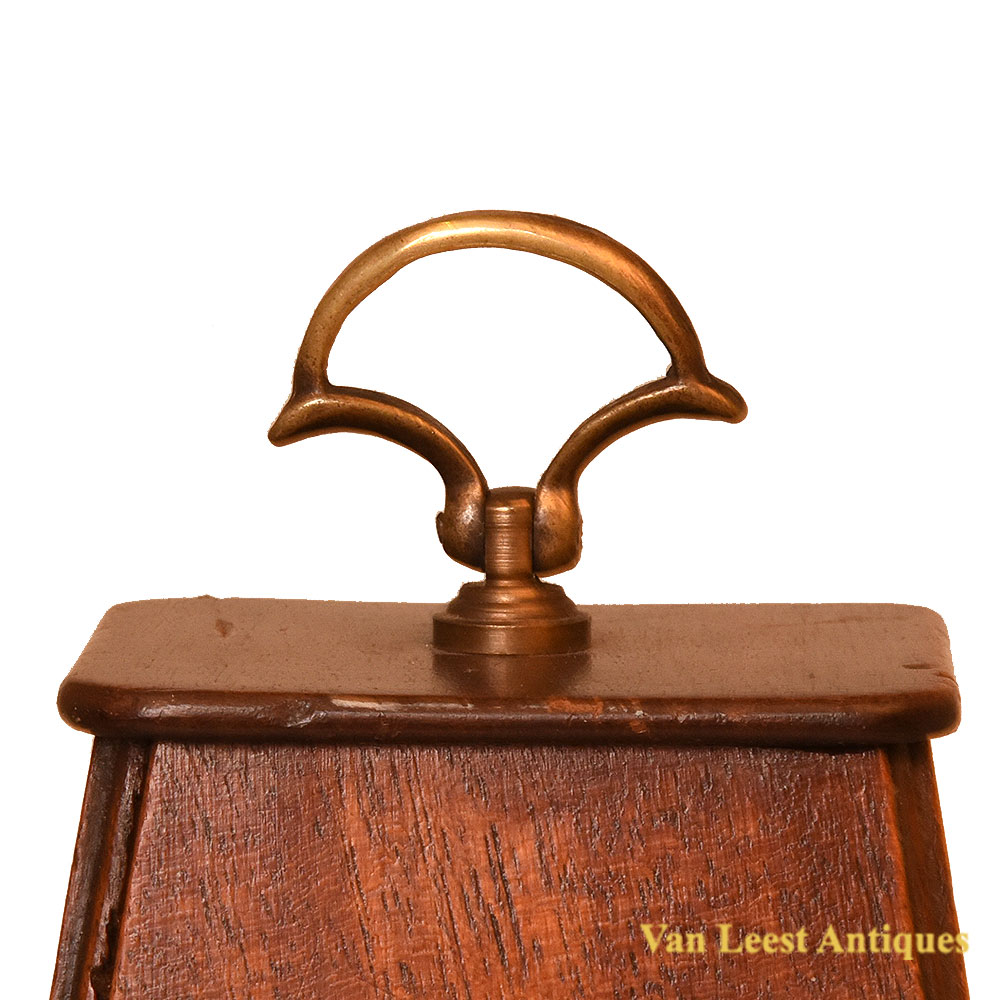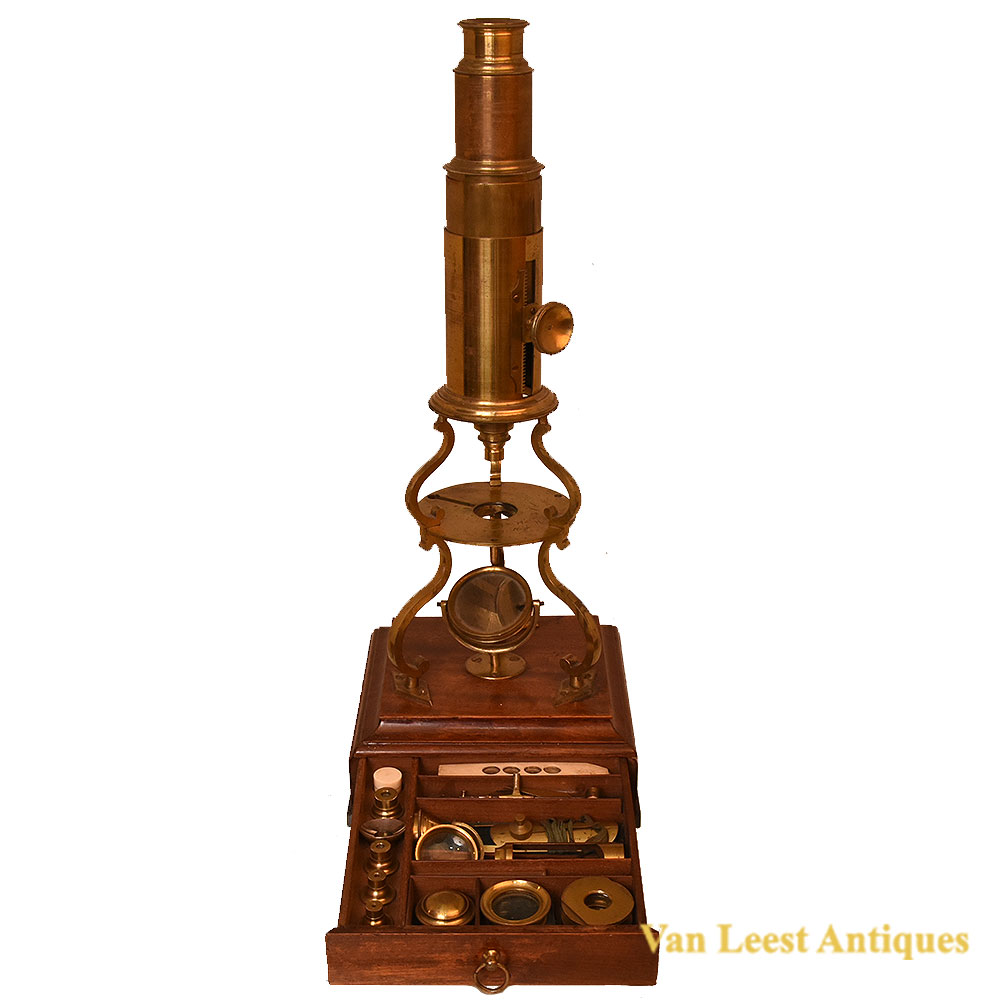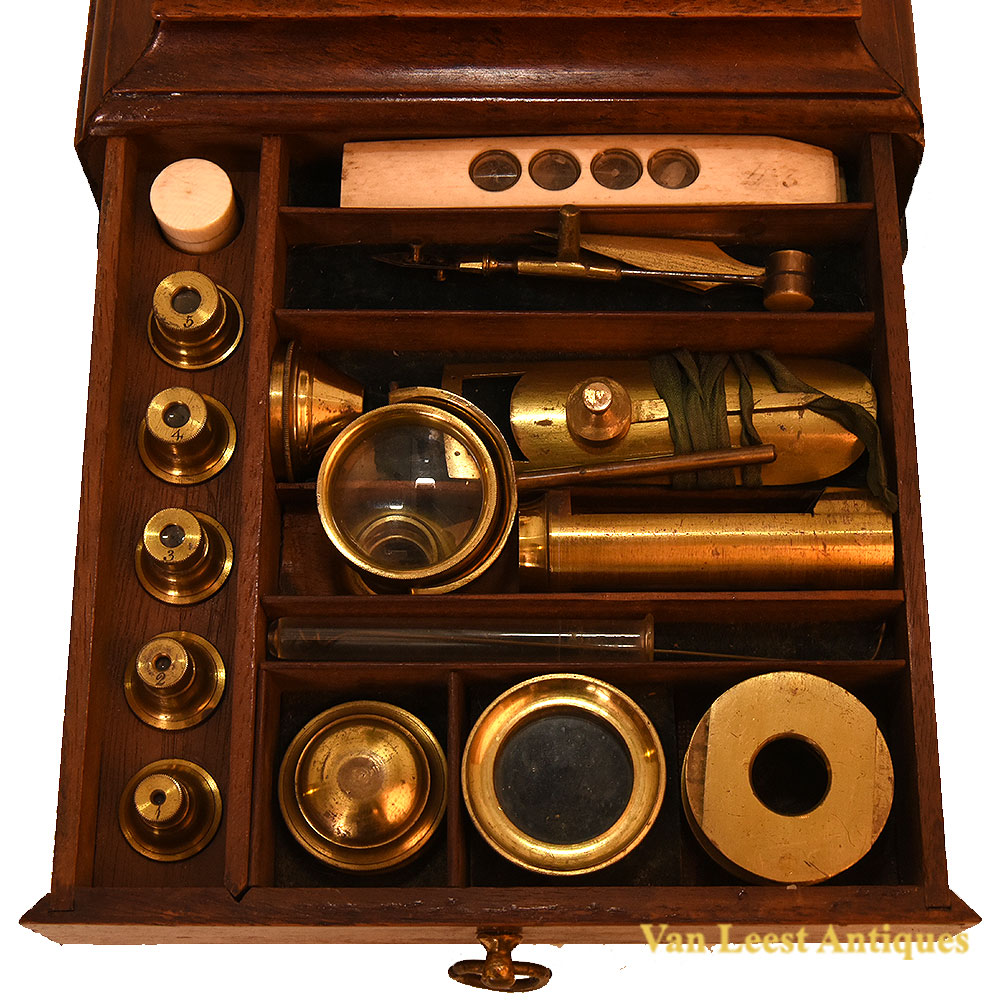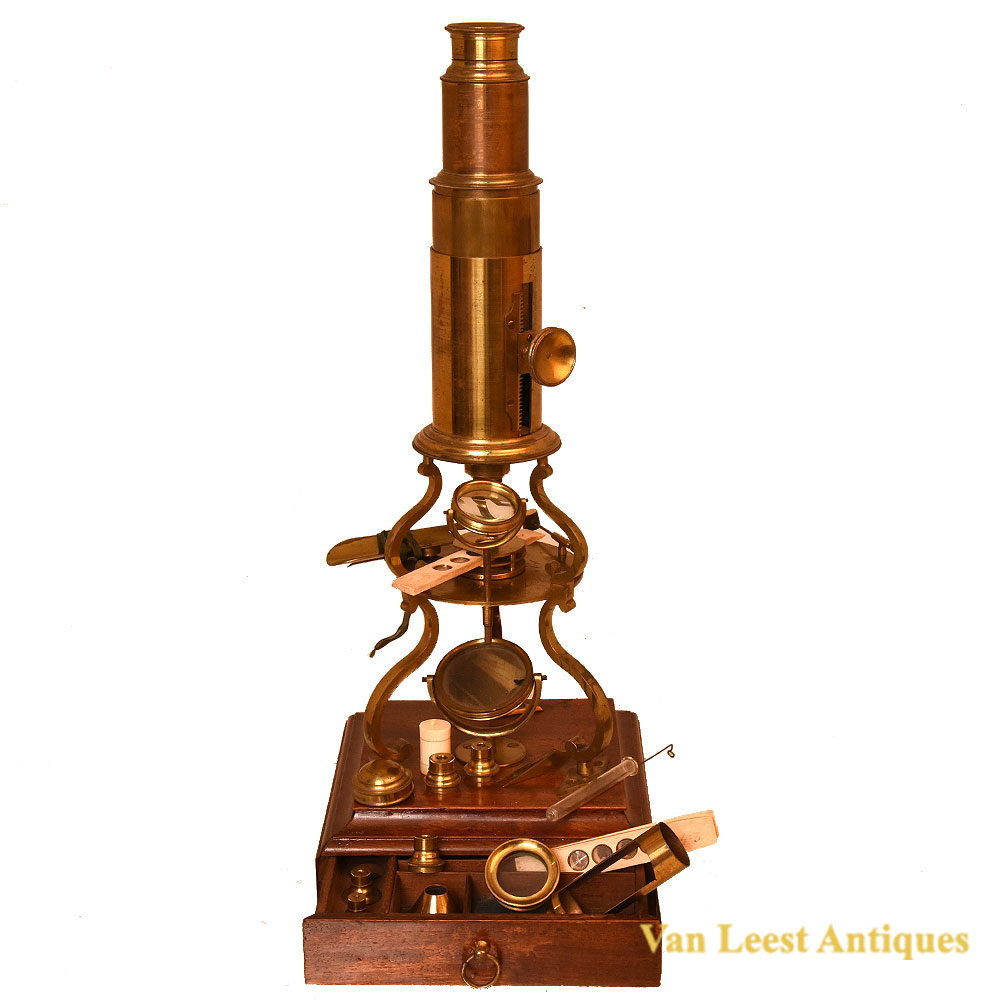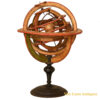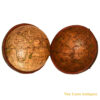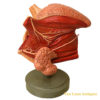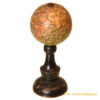Culpeper microscope by William Harris
Stock Number: 00 410628 B S
Sold
Culpeper type microscope by William Harris in fine condition. The Culpeper microscope was developed by Edmund Culpeper in the 17th century.
Dimensions
Dimensions of the box:19,5 x 19,5 x 39,5 cm
Circa
After 1814
Maker
William Harris & Co
Country of manufacture
UK and Ireland
Description
William Harris & Co. Manufacturers of Optical, Mathematical & Philosophical Instruments, 50. High Holborn corner of Biounlow Street London.
William Harris & Co. was a renowned British firm specializing in the production of scientific instruments, particularly microscopes, during the 19th and early 20th centuries. The company was founded by William Harris, who was an accomplished instrument maker.
Sorting out the early years of this company are complicated by the apparent existence of two opticians called William Harris of roughly the same age in London at the same time. The William referred to here was the son of an optician, Richard Harris. After an apprenticeship with a clockmaker called Joseph Robinson, William opened his business at 47 High Holborn in London in 1805. In 1798, he had married Isabella Hastings and they had a number of children, several of whom predeceased them.
In 1813, the business became known as “William Harris & Company” when the eldest son, also William (1799-1839), joined the company, and in 1815, it moved to 50 High Holborn. The company business card advertised that they were Manufacturers of Optical, Mathematical and Philosophical instruments “by His Majesty’s Royal Letters Patent”.
The Culpeper microscope, also known as the Culpeper-style microscope, is an early type of microscope developed in the 17th century by the English chemist and apothecary Edmund Culpeper. Culpeper was a significant figure in the history of microscopy, and his design contributed to the development of the modern microscope.
The Culpeper microscope was a simple design that utilized a single spherical lens (objective) and a concave mirror to direct light onto the specimen. The objective was often housed in a metal tube, which was attached to a swiveling arm that allowed the user to position the specimen.
This type of microscope represented a significant improvement over earlier microscopes, as it provided higher magnification and better image quality. It was also portable and relatively easy to use.
The Culpeper microscope played a crucial role in popularizing microscopy and was used by scientists, apothecaries, and amateurs in the 17th and 18th centuries. It opened up new possibilities for studying small organisms and tissues, contributing to advancements in the biological sciences.
This brass Culpeper microscope is in a fine condition. It comes in its original mahogany cover, unfortunately the key is missing. The mahogany drawer is decorated with an ebony edged on the bottom and is filled with the original collection of asseccories. Among them are all 5 lenses, which are numbered. The microscope is signed on the stage ‘Wm Harris & Co 50. High Holborn London.’ and on mahogany case with a trade label ‘William Harris & Co. Manufacturers of Optical, Mathematical & Philosophical Instruments, 50. High Holborn corner of Brownlow Street London’.
Look for shop information on www.vanleestantiques.com
Ask the Dealer
Dealer information
 Van Leest Antiques
Van Leest Antiques
Van Leest Antiques
Van Leest Antiques, based in Utrecht in the Netherlands, specialises in antique scientific and medical instruments. Their collection covers mainly scientific and medical antique instruments: barometers, globes and planataria, nautical instruments, anatomical models, and pharmacy items. Toon Van Leest travels regularly in Europe and visits trade fairs, auctions, and antique dealers to collect stock and to find pieces to fulfil his clients' unusual requests.
As well as being an avid antique collector and dealer, Toon Van Leest is also a dentist. He believes that antiques are a stable investment, not reliant on trends or fashion, and have truly lasting value. Above all, he says, antiques are timeless and never lose their beauty.




